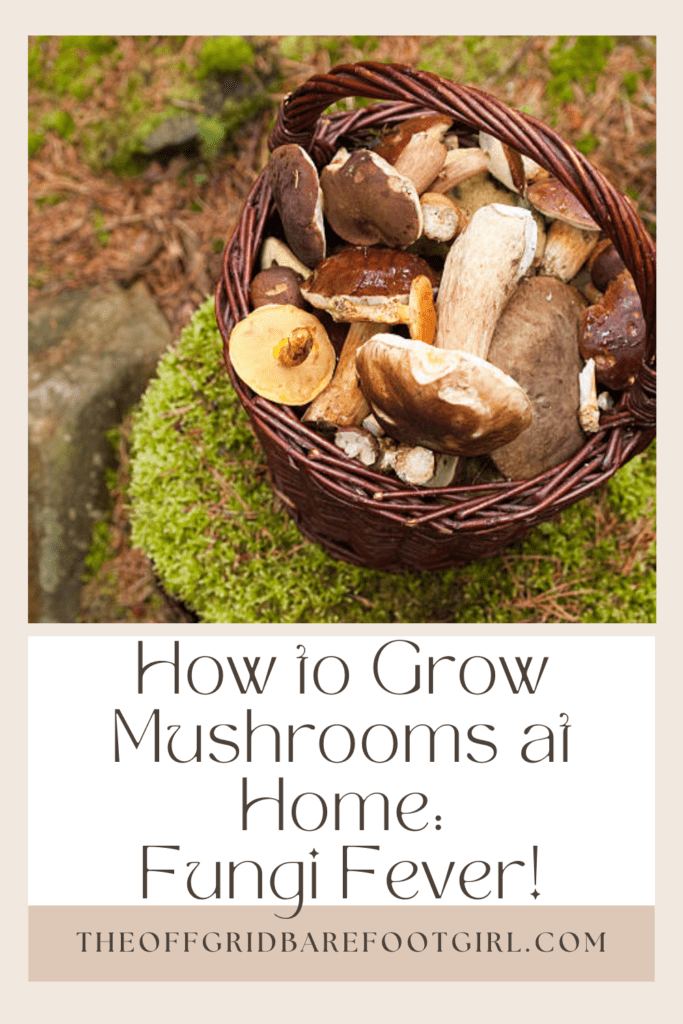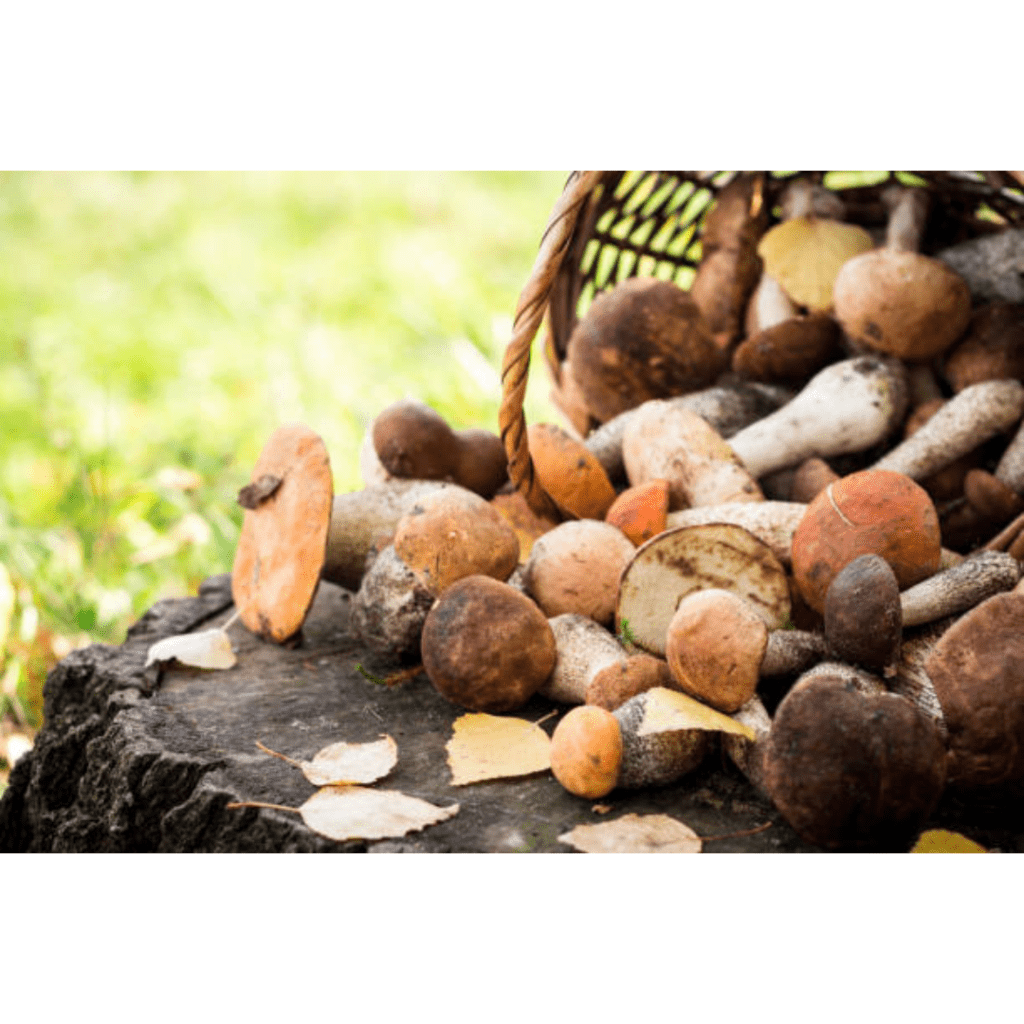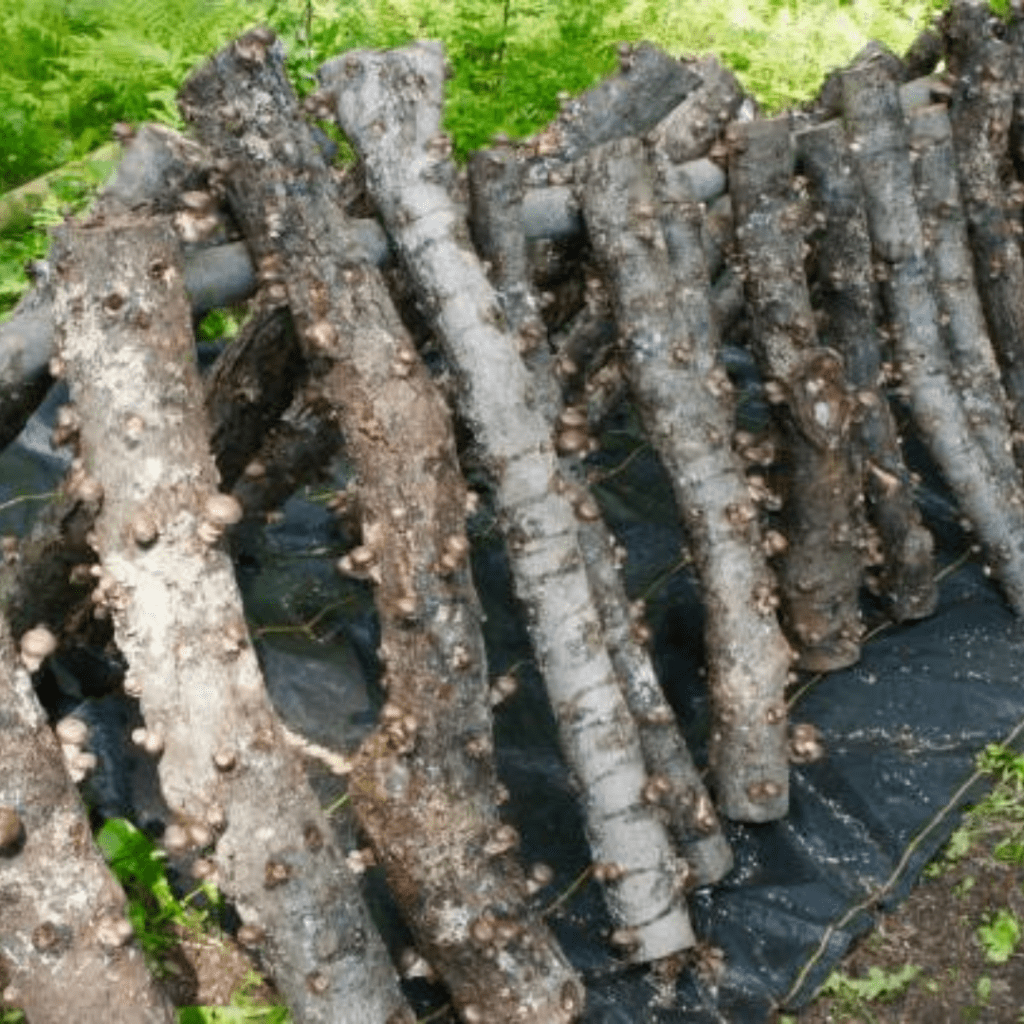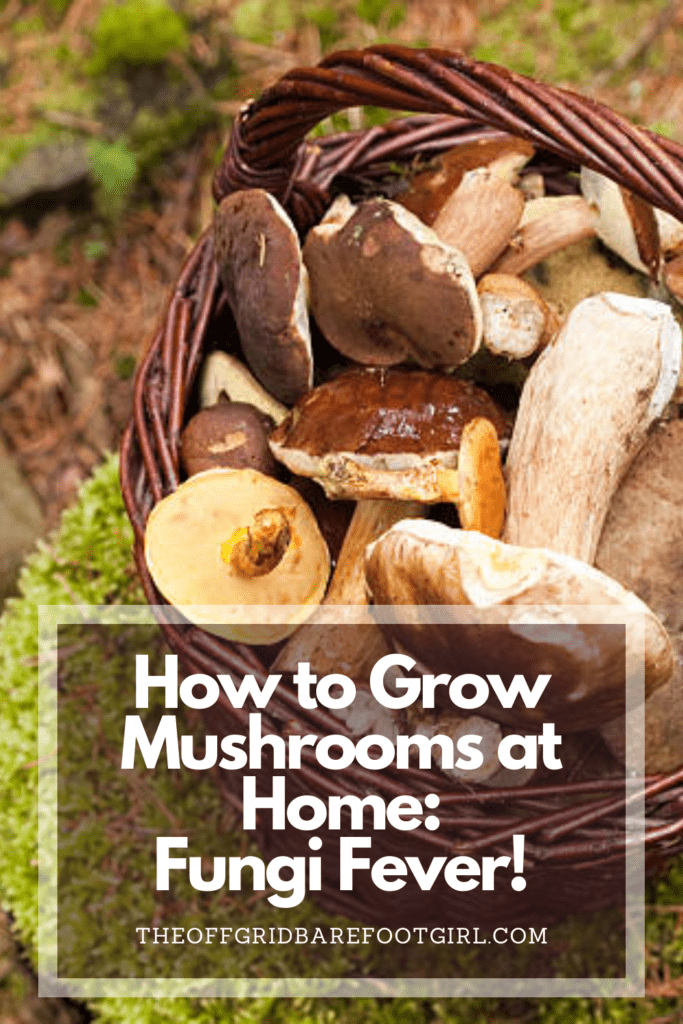How to grow mushrooms.
Growing mushrooms at home can be a rewarding and fascinating endeavor for both seasoned gardeners and beginners alike. With a bit of knowledge and the right resources, cultivating these earthy delights in your own space is not only achievable, but also incredibly fulfilling. From selecting the perfect mushroom variety to nurturing their growth and savoring the fruits of your labor, this guide will walk you through the essential steps to embark on your mushroom-growing journey. Welcome to the world of homegrown mushrooms – where fungi fever is sure to take hold!
This is a pinnable post. Tap or hover over any image in this post to pin to your Pinterest Boards.

Introduction to Growing Mushrooms at Home

It’s time to dive into the wonderful world of growing mushrooms at home! Whether you’re a seasoned gardener looking to add some fungi flair to your repertoire or a newbie to the horticultural scene, cultivating mushrooms can be a fun and rewarding experience. Get ready to catch the Fungi Fever!
Why Grow Mushrooms at Home?
So, why should you bother growing mushrooms at home when you can easily snag a pack from the grocery store? Well, for starters, there’s something incredibly satisfying about nurturing these funky fungi from start to finish. Plus, by growing your own mushrooms, you have full control over the process, ensuring that you’re harvesting the freshest, most flavorful fungi possible.
The Benefits of Homegrown Mushrooms
Besides the bragging rights that come with being a home mushroom cultivator, there are plenty of other perks to consider. Homegrown mushrooms are often more nutritious than store-bought varieties and free from any funky chemicals or preservatives. Plus, growing your own mushrooms can be a sustainable practice, reducing your carbon footprint and keeping things eco-friendly.
Choosing the Right Mushroom Variety

Now that you’re sold on the idea of growing mushrooms at home (it’s why you are here), it’s time to pick the perfect variety for your space. With so many types of mushrooms out there, from the humble button mushroom to the fascinating shiitake, there’s a fungi friend for everyone.
Popular Mushroom Varieties for Home Cultivation
When it comes to popular picks for home cultivation, you can’t go wrong with classics like oyster mushrooms, shiitake mushrooms, or even the versatile cremini mushroom. Each variety brings its own unique flavor and texture to the table, so choose based on your taste preferences and growing conditions.
Considerations for Choosing the Right Mushroom for Your Space
Before you dive headfirst into mushroom growing, take a moment to consider your growing space. Different mushroom varieties have specific requirements when it comes to temperature, humidity, and light, so make sure you choose a variety that fits your setup. After all, you don’t want your mushrooms throwing a tantrum because they’re not getting the VIP treatment they deserve.
Setting Up a Mushroom Growing Space

Now that you’ve chosen your mushroom variety, it’s time to set up a cozy spot for your fungi friends to flourish. Whether you’re planning an indoor setup for year-round harvesting or prefer an outdoor adventure, creating the ideal growing environment is key to a successful mushroom-growing journey.
Indoor vs. Outdoor Growing
Deciding between indoor and outdoor growing depends on your space, climate, and personal preference. Indoor setups offer more control over environmental factors, while outdoor growing can provide a more natural setting for your mushrooms to thrive. Whichever you choose, just make sure your mushrooms feel right at home.
Creating the Ideal Growing Environment
When it comes to mushroom growing, mimicking the natural habitat of these fungi is key. Ensure your growing space has the right balance of moisture, airflow, and light to create a mushroom-friendly environment. Think of it as setting the stage for a fungi fiesta – the better the setup, the more mushrooms will show up to the party.
Cultivating Mushroom Spawn
Understanding what mushroom spawn is and how to prepare it is crucial for a successful growing journey. Don’t worry, I’ll break it down for you in simple terms, no PhD in mycology is required.
Understanding Mushroom Spawn
In a nutshell, mushroom spawn is the “seed” used to kickstart the mushroom growing process. It’s basically a substrate that’s been colonized by mushroom mycelium, ready to work its magic and produce those delicious mushroom caps. Consider it the engine that drives your mushroom-growing adventure.
Methods for Obtaining and Preparing Spawn
When it comes to obtaining mushroom spawn, you have a few options. You can purchase ready-to-inoculate spawn from suppliers or create your own using grain, sawdust, or other substrates. Whichever method you choose, the goal is to provide a nutrient-rich environment for the mushroom mycelium to thrive and eventually give birth to those tasty mushrooms. It’s like preparing a cozy nursery for your soon-to-be fungi offspring – minus the diaper changing.
Caring for and Harvesting Mushrooms
Proper Mushroom Care and Maintenance
Taking care of your fungi friends is essential for a successful harvest. Keep your mushroom growing environment clean and humid, and provide proper ventilation to prevent mold growth. Regularly mist your mushroom beds to maintain the right level of moisture, and ensure they get enough indirect light.
Harvesting Techniques for Different Mushroom Varieties
When it’s time to harvest your mushrooms, gently twist or cut them off at the base to avoid damaging the rest of the cluster. Different varieties require slightly different harvesting techniques, so be sure to research the specifics for the type of mushrooms you’re growing. Remember, a happy mushroom is a tasty mushroom!
Troubleshooting Common Mushroom Growing Issues
Identifying and Remedying Common Mushroom Growing Problems
If you notice discoloration, strange smells, or mold on your mushrooms, it’s time to troubleshoot. Identify the issue quickly, whether it’s inadequate ventilation, incorrect humidity levels, or pests, and take appropriate action to remedy the problem.
Preventative Measures for Maintaining Healthy Mushroom Growth
To keep your mushrooms thriving, prevent issues before they arise. Maintain a consistent growing environment, practice good hygiene, and monitor your mushrooms regularly for any signs of trouble. A little prevention goes a long way in mushroom cultivation!
Creative Ways to Enjoy Homegrown Mushrooms
Delicious Mushroom Recipes to Try
From creamy risottos to hearty mushroom stews, there are endless ways to enjoy your homegrown harvest in the kitchen. Experiment with different cooking techniques and flavor combinations to make the most of your fungi bounty. Get creative and let your taste buds guide you!
Incorporating Homegrown Mushrooms into Everyday Cooking
Don’t be shy about adding your homegrown mushrooms to everyday dishes. Sprinkle them on pizzas, toss them in salads, or sauté them as a savory side dish. The possibilities are endless, so let your culinary imagination run wild with your freshly harvested mushrooms.
Conclusion
As you delve into the world of home mushroom cultivation, remember that patience, care, and a touch of curiosity are key ingredients for success. Whether you’re a dedicated mycophile or just beginning to explore the wonders of fungi, growing mushrooms at home can be a truly enriching experience. So roll up your sleeves, tend to your mushroom patches, and relish in the joy of harvesting your very own flavorful fungi. Here’s to many more bountiful harvests and culinary delights from your homegrown mushroom adventures!
Resources: Here are some helpful resources for further information.
- How to Grow Mushrooms: 8 Step-by-Step Growing Guides – By North Spore
- How Mushrooms Grow – By Mushroom Counsil
- How to Grow Mushrooms: The Ultimate Guide – By GroCycle

Frequently Asked Questions
1. Can I grow mushrooms at home without any prior gardening experience?
Absolutely! Growing mushrooms at home is a fun and rewarding experience that doesn’t necessarily require any prior gardening experience. All you need is the willingness to learn and a bit of patience. There are many beginner-friendly mushroom growing kits available online that come with all the supplies needed to get started, including spores, substrate, and instructions. Some popular varieties to start with are oyster mushrooms or shiitake mushrooms, as they are relatively easy to grow and have delicious flavors. Once you set up your kit in a cool, dark place, all you have to do is follow the instructions and mist your mushrooms regularly. Before long, you’ll be harvesting your own tasty fungi right from the comfort of your own home!
2. How much time and effort does it take to maintain a home mushroom growing setup?
Maintaining a home mushroom growing setup can be a fairly time-consuming process, but the level of effort required depends on the scale of your operation and the type of mushrooms you are cultivating. Starting with small kits or pre-made setups can greatly reduce the initial time and effort needed, as they often come with detailed instructions for care and maintenance. However, if you are building a larger, more intricate setup from scratch, expect to spend several hours each week monitoring temperature and humidity levels, watering your mushrooms, and checking for any signs of contamination or pests. Additionally, regular cleaning and sterilization of your equipment will be necessary to ensure a healthy growing environment. Overall, while maintaining a home mushroom growing setup may require some dedication and attention to detail, the rewards of harvesting fresh mushrooms from your own backyard can make it all worth it.
3. Are there any safety concerns or precautions to keep in mind when growing mushrooms indoors?
When growing mushrooms indoors, there are definitely some safety concerns and precautions to keep in mind. One of the main things to be cautious about is mold contamination, which can quickly spread and ruin your mushroom crop. To prevent this, it’s important to maintain a clean and sterile environment by regularly sanitizing your equipment and workspace. It’s also crucial to monitor humidity levels closely, as overly damp conditions can create a breeding ground for harmful bacteria and mold. Additionally, proper ventilation is key to preventing the buildup of carbon dioxide, which can be dangerous in an enclosed space. Finally, always remember to handle mushrooms with care and wash your hands thoroughly after coming into contact with them, as some varieties can be toxic if ingested raw. By following these safety precautions, you can enjoy growing mushrooms indoors without putting your health at risk.
4. What are some common signs of issues that may arise during the mushroom growing process, and how can they be addressed?
When growing mushrooms, there are several common signs of issues that may arise. One common issue is contamination, which can manifest as strange colors (like pink or green) appearing on the substrate or mushrooms themselves. Another sign is mold growth, which can be identified by fuzzy white patches on the substrate or mushrooms. Mushrooms not growing properly, such as stunted growth or misshapen caps, can also indicate possible problems in the growing process. To prevent and address these issues, it’s important to maintain proper hygiene practices, ensure proper air circulation and humidity levels, use quality substrates, and monitor for any signs of pests or diseases. Regularly checking on the progress of your mushrooms and promptly addressing any abnormalities can help ensure a successful harvest.
Summary
I hope I have inspired you to grow mushrooms with these tips and products.
If you were encouraged by this post, I invite you to check out my FREE Printables Page for fun free printables, planners, and charts.
ENTER MY FREE Printables Page HERE
Here are some more of my gardening inspiration posts to check out!
Onions: How to Grow Onions for Storage
Peas: How to Grow Garden Peas for a Bumper Crop
Carrots: How to Grow Carrots for a Bountiful Harvest
Prep Your Garden for Spring Planting with These Expert Tips!
How to Grow a Prepper Garden to Survive and Thrive
The Best Garden Tools You Need for a Productive Season
Fastest Growing Vegetables for Your Survival Garden
How to Grow Marigolds As Pest Control In Your Vegetable Garden
Must-Have Tools for a Successful Balcony Vegetable Garden
How to Effectively Combat Powdery Mildew in Your Garden
The Best Tips for Organic Gardening
How to Release Ladybugs In Your Garden for Organic Pest Control
The Best Garden Snail Control Strategies
The Best Spring Vegetables to Grow in Your Garden
Seed Starter Mix: How To Make Your Organic Seed Starter Mix At Home
How to Grow a Productive Canning Garden
How to Plant and Grow a Salsa Garden
Easiest Heirloom Vegetable Seeds to Grow Now
How to Use the Hand Twist Claw Tiller: Tackling Tough Soil
Planning Your Garden: How to Plan a Vegetable Garden: Expert Green Thumb Tips!
Winterizing the Garden: How to Winterize Your Vegetable Garden: Step-by-Step Checklist
Mulching the Garden: How to Make Leaf Litter Mulch
Grow a Pumpkin Patch: How to Grow a Pumpkin Patch in Your Backyard
How to Grow a Fall Garden: 9 Best Fall Crops
Clever Ways to Incorporate Indoor Composting into Your Home
How to Start Composting for the Garden: A Step-by-Step Guide
The Ultimate Guide to Composting in Your Suburban Backyard
Why I Built A Survival Garden in My Backyard
16 Best Medicinal Herbs to Grow in Your Garden Now
Blessings,
The Off Grid Barefoot Girl






